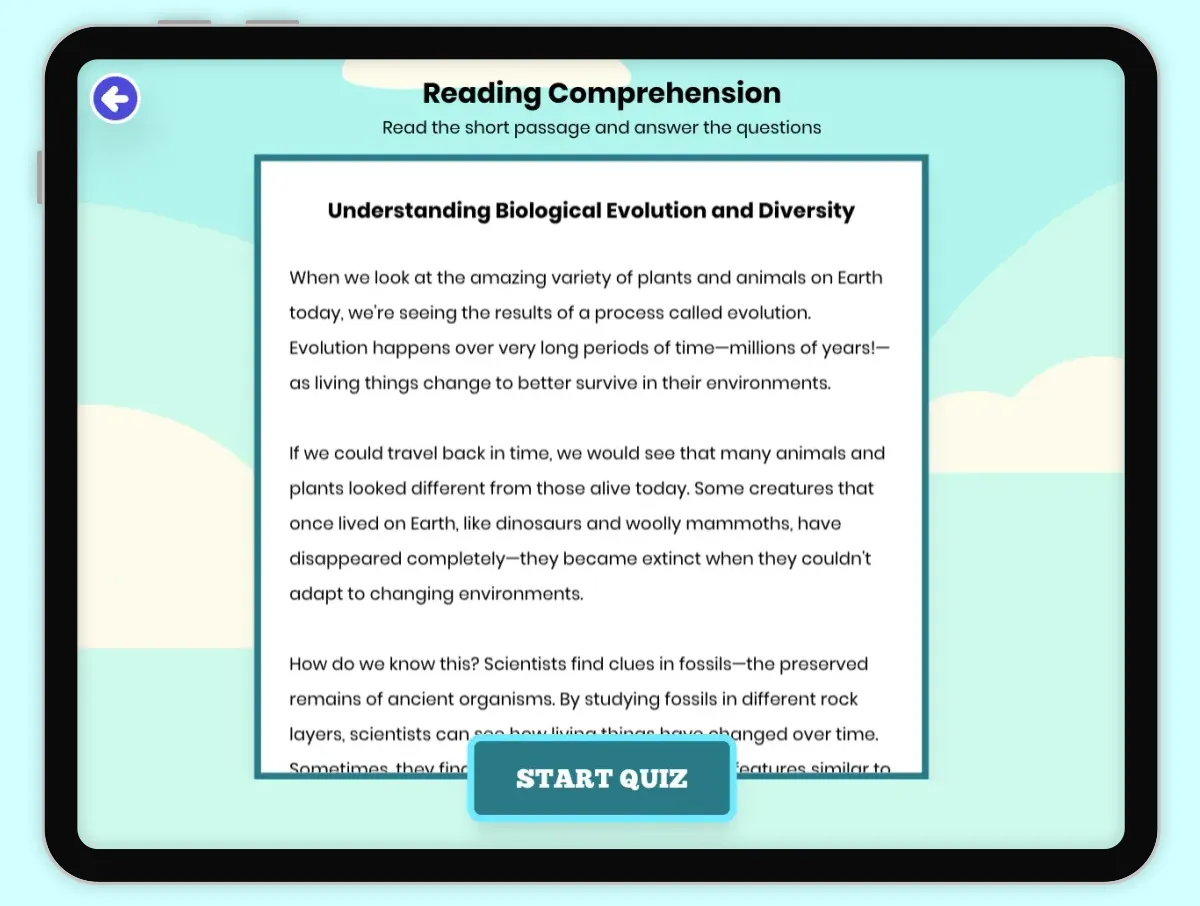Understanding Biological Evolution and Diversity — Passage and Quiz
Understanding Biological Evolution and Diversity
When we look at the amazing variety of plants and animals on Earth today, we're seeing the results of a process called evolution. Evolution happens over very long periods of time—millions of years!—as living things change to better survive in their environments.
If we could travel back in time, we would see that many animals and plants looked different from those alive today. Some creatures that once lived on Earth, like dinosaurs and woolly mammoths, have disappeared completely—they became extinct when they couldn't adapt to changing environments.
How do we know this? Scientists find clues in fossils—the preserved remains of ancient organisms. By studying fossils in different rock layers, scientists can see how living things have changed over time. Sometimes, they find fossils of organisms that had features similar to modern animals but also important differences.
For example, horse fossils show that ancient horses were much smaller (about the size of a dog!) and had multiple toes instead of hooves. Over millions of years, as grasslands spread and the environment changed, horses evolved to become larger, faster, and developed hooves that were better for running on hard ground.
Even though living things look different from their ancestors, they share a unity—connections that show they're related. Just like you might have your grandmother's eyes or your father's smile, organisms share traits with their ancestors while developing new features that help them survive in their environments. This combination of shared ancestry (unity) and different adaptations (diversity) is what makes the story of life on Earth so fascinating!
Quiz
1. According to the passage, evolution happens over:
2. What does the passage say happened to dinosaurs and woolly mammoths?
3. What evidence do scientists use to learn about organisms that lived long ago?
4. Ancient horses were different from modern horses because they:
5. According to the passage, why did horses evolve to have hooves?
6. The passage suggests that organisms alive today:
7. The term "unity" in the passage refers to:
8. What environmental change does the passage mention that influenced horse evolution?





















